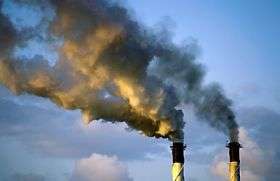Emissions rising faster this decade than last

The latest figures on the global carbon budget to be released in Washington and Paris today indicate a four-fold increase in growth rate of human-generated carbon dioxide emissions since 2000.
“This is a concerning trend in light of global efforts to curb emissions,” says Global Carbon Project (GCP) Executive-Director, Dr Pep Canadell, a carbon specialist based at CSIRO in Canberra.
Releasing the 2007 data, Dr Canadell said emissions from the combustion of fossil fuel and land use change almost reached the mark of 10 billion tonnes of carbon in 2007.
Using research findings published last year in peer-reviewed journals such as Proceedings of the National Academy of Sciences, Nature and Science, Dr Canadell said atmospheric carbon dioxide growth has been outstripping the growth of natural carbon dioxide sinks such as forests and oceans.
The new results were released simultaneously in Washington by Dr Canadell and in Paris by Dr Michael Raupach, GCP co-Chair and a CSIRO scientist.
Dr Raupach said Australia’s position remains unique as a developed country with rapidly growing emissions.
“Since 2000, Australian fossil-fuel emissions have grown by two per cent per year. For Australia to achieve a 2020 fossil-fuel emissions target 10 per cent lower than 2000 levels, the target referred to by Professor Garnaut this month, we would require a reduction in emissions from where they are now by 1.5 per cent per year. Every year of continuing growth makes the future reduction requirement even steeper.”
Source: CSIRO





















